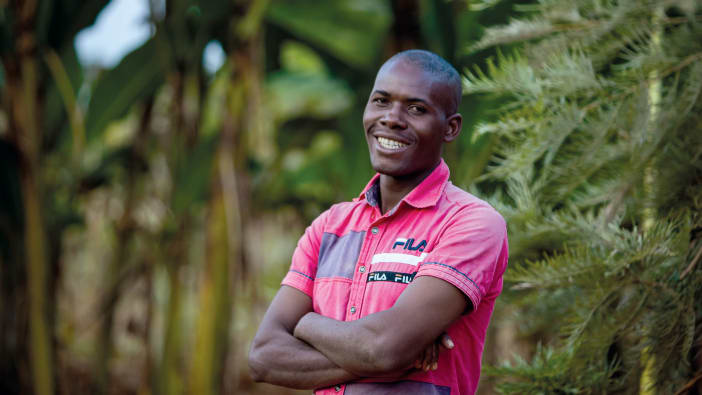
Articles
Underground storage pits
Underground storage pits can be used to store vegetables in dry areas for a few months. Having a good supply of stored vegetables improves household nutrition and means vegetables can be sold for higher prices later in the year when they are not easily available. Underground storage keeps vegetables cool during the hot season.
2003 Available in English, French, Spanish and Portuguese

From: Household agriculture – Footsteps 54
Ideas for making the most of available land and other agricultural resources

Underground storage pits can be used to store vegetables in dry areas for a few months. Having a good supply of stored vegetables improves household nutrition and means vegetables can be sold for higher prices later in the year when they are not easily available. Underground storage keeps vegetables cool during the hot season.
Roots and tubers such as cassava and potatoes store well underground. Solid vegetables such as cabbages can also be stored. Pits can vary in size, depending on the quantity of vegetables to be stored and the level of the water table. Usually, they are 1–2 metres deep. Place vegetables close together on a layer of sand, straw or leaves. A thick layer of leaves, such as banana leaves, is then placed on top of the vegetables, followed by a 25–50cm layer of soil or sand.
The leaves should provide some moisture to the vegetables. If the weather is very dry, a little water can be poured over the storage pit occasionally. However, too much water will cause the vegetables to rot. Storage pits need to be checked regularly to make sure that any rotting vegetables are removed quickly before the rot spreads.
Putting the vegetables in sacks made from cloth, jute or strong paper allows them to be removed easily and may help to prevent any diseases or pests from spreading. A small amount of insecticide can be put into the bottom of the hole to keep insects away. Experiment using different depths, types of leaves and levels of moisture. Compare the size and quality of the vegetables that have been stored for different periods of time.
Adapted from information in Debacle, Vol VI, Nos 3 & 4 and PILLARS guide to Food Security
Share this resource
If you found this resource useful, please share it with others so they can benefit too.

Subscribe to Footsteps magazine
A free digital and print magazine for community development workers. Covering a diverse range of topics, it is published three times a year.
Sign up now - Subscribe to Footsteps magazine





